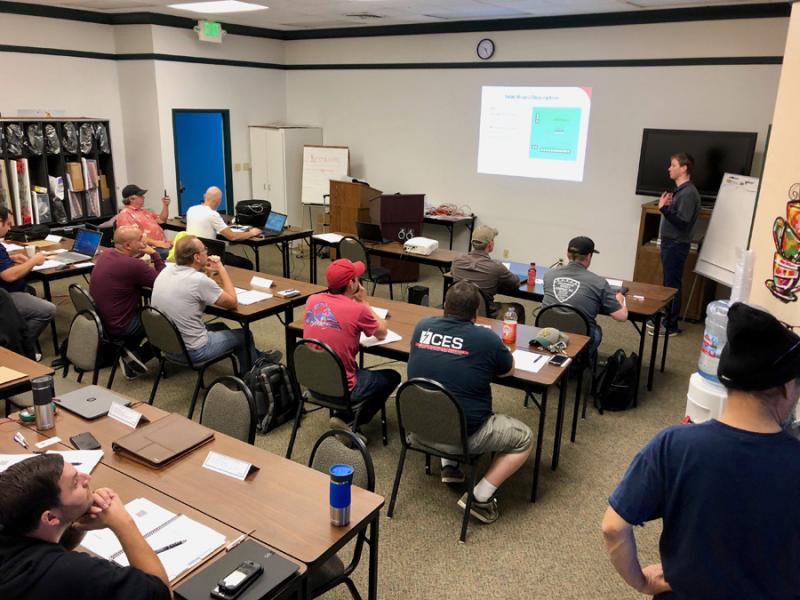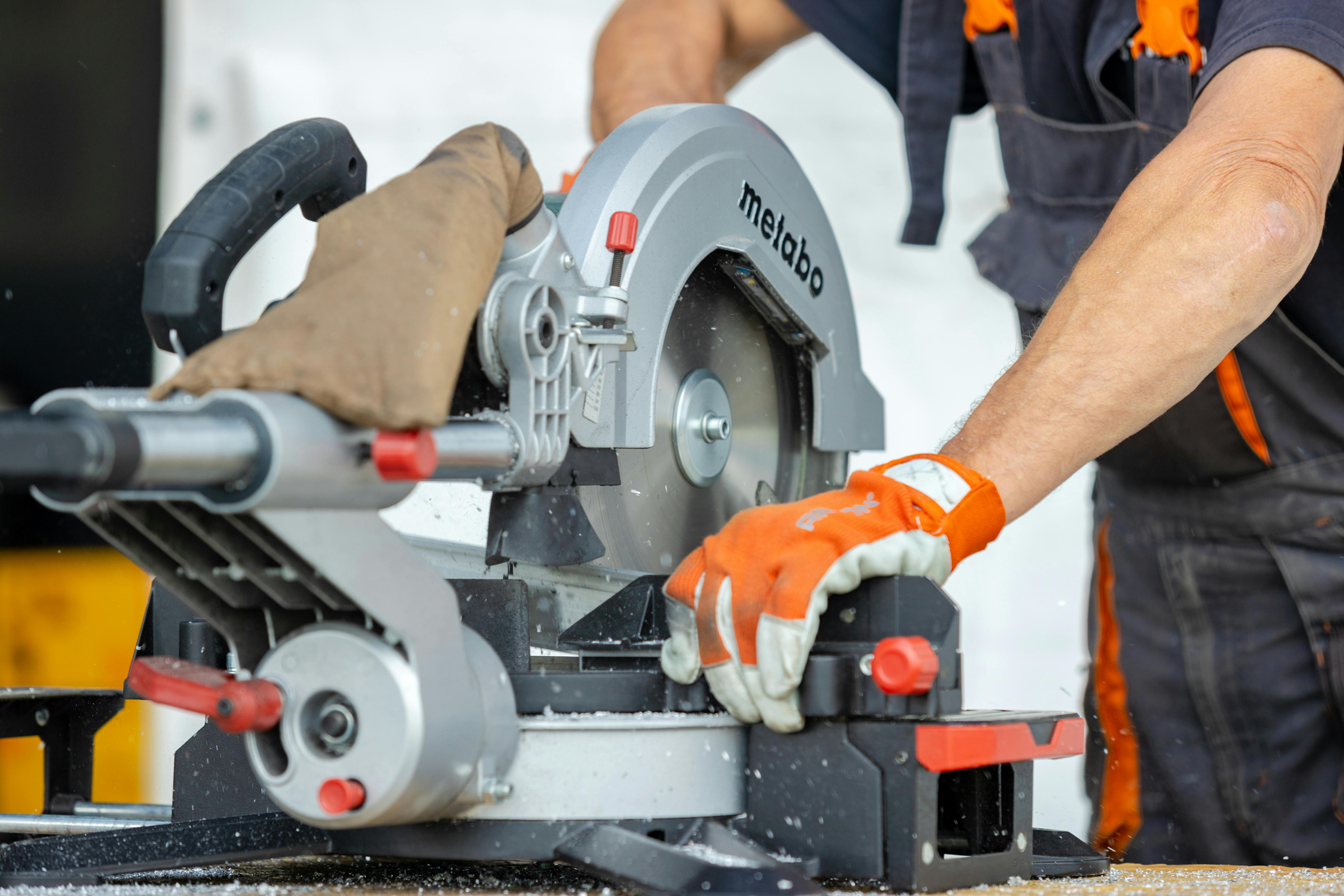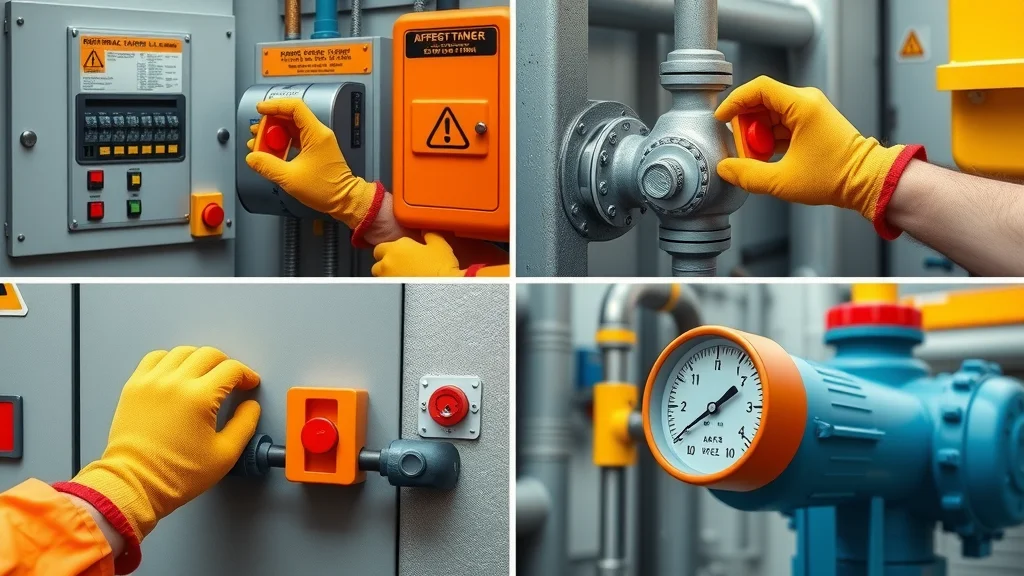Did you know improper lockout tagout procedures are responsible for thousands of workplace injuries every year and up to 10% of all serious industrial accidents? Understanding and implementing proper lockout tagout is key to avoiding disaster, especially on construction and warehouse sites where hazardous energy lurks in even the simplest tools and machines.
Why General Contractors Must Inspect Subcontractor Tools for Lockout Tagout Compliance
Promoting a Safe Jobsite: The General Contractor’s Responsibility

Lockout Tagout: The Crucial First Line of Defense in Workplace Safety
Lockout tagout (often abbreviated as LOTO) is not just a regulatory requirement; it’s the single most effective defense against hazardous energy accidents in any work environment. From construction sites bustling with subcontractors to bustling warehouses filled with machinery, the correct application of lockout tagout procedures protects both workers and assets. According to recent OSHA findings, many accidents occur when energy sources are not properly isolated before maintenance or service begins. In these situations, a worker may face the sudden release of stored energy from a power source, which can cause extensive injuries, or worse, fatalities.
Implementing lockout tagout isn’t a mere formality; it’s an actionable safety control program that combines specific lockout devices, tagout devices, and isolating devices. Each piece forms part of a larger system — a living tagout program — that requires ongoing employee training, thorough inspections, and strict documentation. General contractors, especially, must ensure that all workers, including those from subcontracting companies, adhere to these procedures. Failing to do so can result in not only OSHA fines but tragic and entirely preventable injuries. The key? Make lockout tagout your first line of defense.
"Every year, thousands of workers are injured or killed due to the unexpected release of hazardous energy. Proper lockout tagout procedures can reduce these accidents by up to 60%." – Occupational Safety & Health Administration (OSHA)
What You'll Learn About Lockout Tagout
Understand core principles and importance of lockout tagout
Identify key lockout devices, tagout devices, and isolating devices
Comprehend OSHA rules and industry best practices
Master the 7 key steps to lockout tagout
Learn the four official types of LOTO
Know why inspecting lockout tagout procedures on-site is critical for general contractors
Contractors Understanding Lockout Tagout: Definition and Scope

General contractors hold the pivotal role of ensuring that all workers, including those from subcontractor crews, are following correct lockout tagout procedures. On construction projects or within warehouses, equipment may be owned or operated by different parties at different times. Without a unified approach, there is real potential for critical steps—such as the application of a lockout tag, verification of an isolating device, or the notification process—to be skipped or inadequately performed.
Regular inspections of subcontractors’ machines or equipment, tools, and energy sources ensure that all parties meet OSHA’s lockout tagout standards and internal requirements. This proactive step not only prevents fines and shutdowns but, more importantly, demonstrates a sincere commitment to workforce safety and compliance. It also builds trust between contractors and subs, assuring everyone on site that safety is more than a formality; it’s a shared value. Making these inspections routine is the best way to confirm that every lockout device, tagout device, and isolating device is correctly in place and documented, controlling hazardous energy at every step.
Lockout Tagout Device Types Compared |
|||
Device Type |
Primary Use |
Energy Source |
Best For |
|---|---|---|---|
Lockout tag |
Warning/identification |
Multiple |
General machinery |
Lockout device |
Energy isolation |
Electrical, mech. |
Equipment maintenance |
Tagout device |
Risk notification |
All |
Supplemental control |
Control of Hazardous Energy: Why It Matters

The control of hazardous energy is the backbone of industrial safety programs. Hazardous energy exists in various forms—electrical, mechanical, thermal, chemical, hydraulic, and pneumatic—that can be unintentionally released and cause severe harm. Without effective lockout tagout procedures in place, these energy sources pose silent but imminent threats during equipment servicing or repair.
From a warehouse’s automatic conveyor system to a construction site’s heavy equipment, every energy source must be accounted for and methodically isolated using proper isolating devices, lockout devices, and tagout devices. OSHA mandates a comprehensive control procedure for all forms of hazardous energy to protect both individual authorized employees and entire jobsite teams. Failing to control hazardous energy means that a simple slip—like missing a hidden energy source or neglecting a lockout tag—can result in catastrophic consequences for workers and operations alike. Lockout tagout exists precisely to eliminate this risk.
Lockout Tagout Legal Framework: OSHA Rules and Standards
What are the OSHA rules for lockout tagout?
OSHA’s standard for lockout tagout, codified under 29 CFR 1910.147, is the cornerstone of legal workplace safety requirements for control of hazardous energy. These rules strictly outline when lockout tagout must be implemented, who qualifies as an authorized employee, and what counts as a compliant lockout device or tagout device. OSHA rules specify that any servicing or maintenance of machines or equipment where the unexpected energization or release of stored energy could occur requires a documented lockout tagout procedure.
Furthermore, all lockout and tagout devices must be both durable and standardized within your workplace. OSHA insists on individualized lockout devices to ensure that only the employee who applied the lock or tag may remove it. These standards are especially vital in construction and warehouse environments, where multiple authorized employees might be controlling different energy sources at once. Proper observance of OSHA’s lockout tagout rule is not only best practice but is also legally required, helping reduce the risk of hazardous energy incidents.
Lockout Tagout Program Requirements
Written procedures for isolating device and hazardous energy control
Employee training
Periodic inspections of lockout tagout procedures
Clear identification of lockout device and tagout device

A robust tagout program centers on clear, written lockout tagout procedures tailored to each piece of machinery or equipment—no exceptions. These procedures must identify all potential energy sources, detail the appropriate isolating devices, and require precise application of lockout devices and tagout devices. Employees must receive thorough training on procedure, device application, and the consequences of non-compliance.
Periodic inspections inside your energy control program are necessary to verify adherence and identify any gaps. Each lockout tag or tagout device must be easily recognizable, durable, and able to withstand the intended environment. General contractors are especially responsible for ensuring all subcontractor personnel understand and follow these requirements. Ignoring even a single part of the lockout tagout rule can leave workers—and your company—exposed to serious harm and substantial legal penalties.
Step-by-Step: The Lockout Tagout Procedure
What are the 7 steps to lockout tagout?

Preparation – Identify all sources of hazardous energy and control methods.
Notification – Inform all affected employees that lockout tagout will occur.
Shutdown – Properly shut down machinery or equipment.
Isolation – Use isolating devices to disconnect hazardous energy.
Application of Lockout/Tagout Devices – Attach lockout devices and tagout devices.
Control of Hazardous Energy – Verify equipment isolation.
-
Release From Lockout Tagout – Inspect, remove lockout tag devices, and restore energy safely.
*Custody Log - If the original person is not available there must be a custody log and 3 attempts made to contact the person in charge of the project. Each attempt must be logged and the response or outcome of each attempted.
Each of these steps forms the backbone of every reliable lockout tagout program. Start with a thorough identification of all possible energy sources, including hidden or secondary sources of stored energy. Notification is key to prevent unintentional attempts to operate equipment. Systematic shutdown follows, in line with the manufacturer's guidelines and established control procedures.
Next comes isolation, which means locking or tagging out every isolating device to create a physical break. Application of lockout and tagout devices must meet OSHA and company-specific rules. Crucially, before starting work, it’s mandatory to verify that hazardous energy has truly been isolated—this is the fail-safe in the entire process. Upon completing the job, carefully inspect and safely remove all lockout tag devices to restore energy, always re-notifying affected employees. Following all seven steps ensures both legal compliance and worker safety.
Types of LOTO: Categorizing Lockout Tagout Procedures
What are the 4 types of LOTO?
Electrical lockout tagout
Mechanical lockout tagout
Chemical lockout tagout
Thermal/Pressure lockout tagout

Lockout tagout is not one-size-fits-all—each type is designed to deal with the distinct risks presented by various energy sources. Electrical lockout tagout is the most common, involving isolation of electrical circuits, switchgear, and breakers. Mechanical lockout tagout targets moving parts or stored kinetic energy, such as flywheels or conveyor belts. Chemical lockout tagout is necessary for isolating hazardous chemicals in piping or storage tanks, preventing unwanted release of stored chemicals.
Finally, thermal/pressure lockout tagout focuses on energy from pressurized vessels, steam lines, or heated fluids, where release could cause scalding or explosions. It’s critical for any lockout tagout program to accurately identify which of these four types is necessary on each piece of machinery or equipment. In many complex worksites, more than one type may be needed in combination, requiring detailed, multi-layered control procedures to eliminate all hazardous energy risks.
Despite clear procedures, mistakes are common in the application of lockout tagout. Workers sometimes use the wrong lockout device or skip critical steps, especially under time pressure. Incomplete identification of isolating devices or neglecting to verify the absence of hazardous energy are key factors in most LOTO-related accidents. Every machine or equipment must have a clear and well-documented energy control procedure.
Another frequent lapse is treating the tagout device as a formality—merely a “label”—when it is actually an essential part of communicating risk and intent. Skipping steps or failing to physically test for stored energy before work begins can have catastrophic consequences. Regular training, thorough inspections, and a culture that prioritizes safety above speed are essential to eliminate these common mistakes and maintain proper control of hazardous energy on every job.
Watch a step-by-step demonstration on how to perform lockout tagout using proper devices and isolating energy sources.
Discover exactly how to perform a safe and compliant lockout tagout procedure. This video provides a visual walkthrough—beginning with identification of hazardous energy, notification of affected employees, and continuing step-by-step through shutdown, isolation, application of lockout and tagout devices, verification of isolation, and safe restoration of energy sources. With close-up shots and expert narration, this demonstration is a practical tool for training every authorized employee.
Lockout Tagout in Construction and Warehouse Sites: Industry-Specific Concerns
Unique challenges with shared equipment
Responsibility coordination between contractors and subcontractors
Increased importance of documenting hazardous energy control
Construction and warehouse sites present a unique set of lockout tagout challenges. Because equipment is often shared between teams or subcontractors, strict communication and documentation become non-negotiable. One crew may finish service and “release” the machine, only for another to begin work—potentially before energy sources have been properly re-isolated.
Careful assignment of responsibility and an enforced chain of custody for each lockout tag or tagout device is vital. General contractors must go further than minimum compliance—establishing seamless coordination and documentation not only for their crews but for every individual on site. With numerous energy sources and personnel involved, the risk of inadvertent energy release is multiplied, and only disciplined adherence to control of hazardous energy can provide true protection.
Key Takeaways for Lockout Tagout Safety
Lockout tagout is essential for controlling hazardous energy and preventing workplace injuries
General contractors must ensure all tools, including those used by subcontractors, are compliant with LOTO procedures
Regular training and inspection are critical to an effective lockout tagout program
Ready to Upgrade Your Lockout Tagout Program?
Give us a call at (800) 433-9819 or visit our website at calsafetysolution.com to talk with lockout tagout experts and schedule a compliance review for your team.
Conclusion
Lockout tagout isn’t just a requirement—it’s your team’s lifesaver on every job. Prioritize it, practice it, and make it part of your workplace culture.
 Add Row
Add Row  Add
Add 

Write A Comment